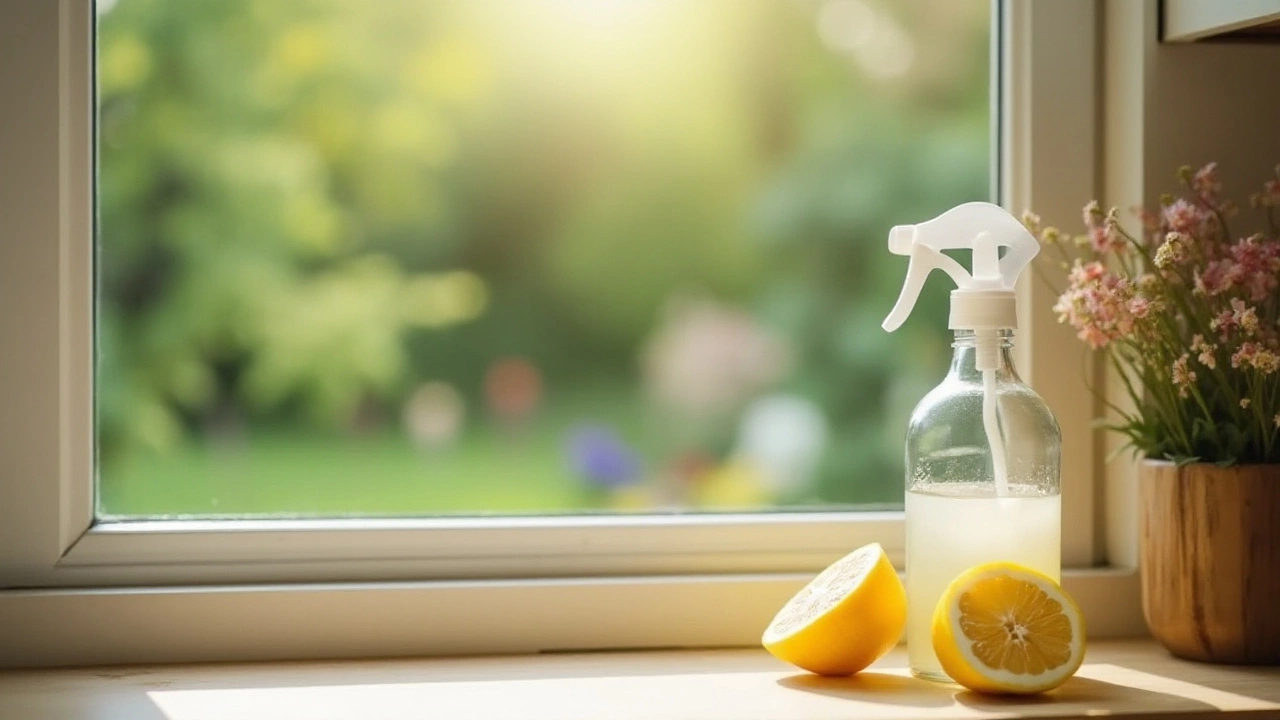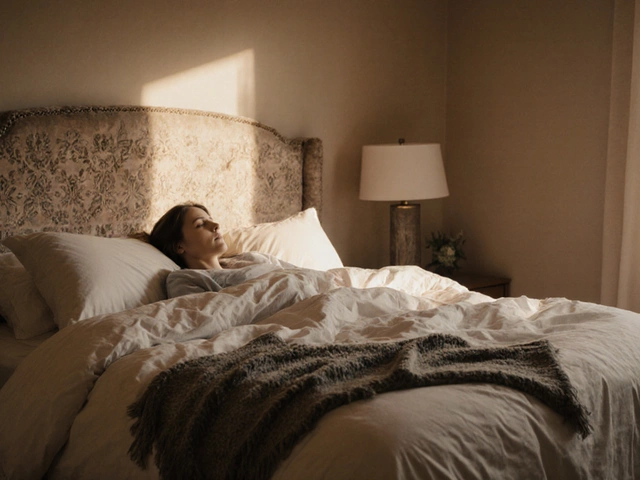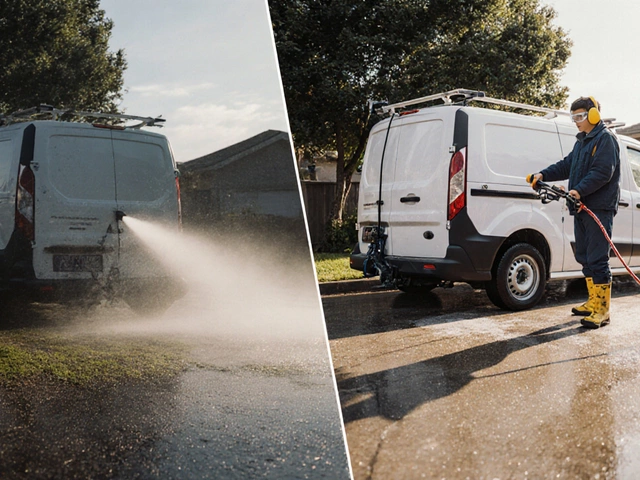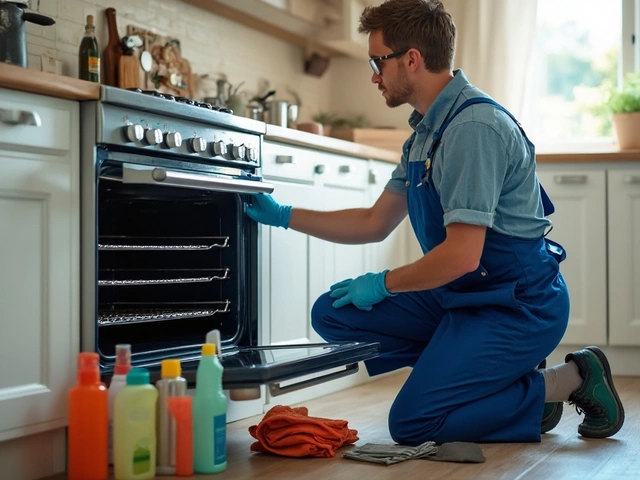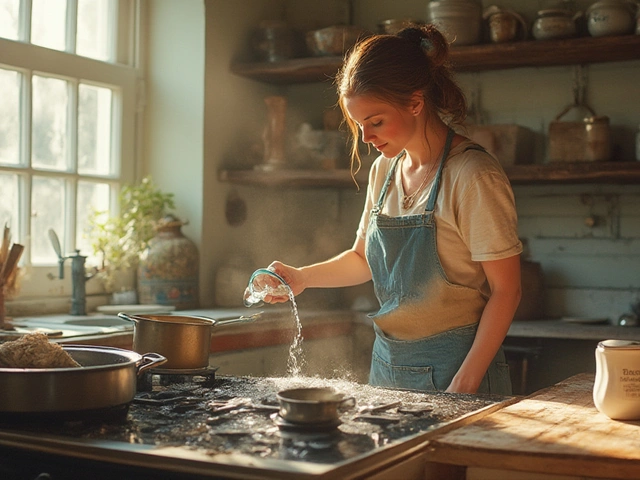Windows have an uncanny way of revealing the dust and fingerprints of a bustling household, yet the task of cleaning them often slips onto the back burner. For those seeking a gleaming view without the expense of store-bought solutions, a homemade window cleaner can be a game-changer.
Creating your own cleaning solution not only brings satisfaction but gives you control over what you're using around your home. With just a few easy-to-find ingredients, you can whip up a powerful cleaner that rivals anything from the supermarket aisle. Say goodbye to chemical-laden products and embrace the ease and economy of doing it yourself.
In this article, we'll step into the world of DIY cleaning, where you'll learn how to mix, apply, and store your concoction while understanding why each element plays a vital role in leaving your windows spotless. Let’s dive into the refreshing simplicity of making your windows shimmer.
- Why Choose Homemade Cleaners
- Essential Ingredients Needed
- Step-by-Step Mixing Guide
- Tips to Avoid Streaks
- Environmental Benefits of DIY Cleaners
- Storing and Using Your Cleaner
Why Choose Homemade Cleaners
Imagine peering out of your window through sparkling clean glass, but being keenly aware that conventional cleaners often come with a cocktail of chemicals that you might not want lingering in your home. One compelling reason to embrace homemade cleaners is their ability to effectively clean without the harsh additives found in many commercial products. These homemade concoctions employ natural ingredients such as vinegar and baking soda, which have been used for generations due to their proven cleaning prowess. With DIY cleaning solutions, you can take comfort in knowing precisely what goes into your cleaner, offering peace of mind especially for households with children or pets.
In addition to the health benefits, there's an undeniable economic advantage. Store-bought glass cleaning solutions can be costly, and they come with the environmental cost of disposable plastic packaging. By crafting your own solution at home, you're not only saving money but also reducing waste. A simple mix of vinegar and water can achieve much of what these pricier options promise, without the need for synthetic fragrances or dyes. According to a study by the American Cleaning Institute, families can save up to $100 a year by switching to DIY cleaning methods, which also means fewer trips down the cleaning aisle at the supermarket.
"It’s remarkable how effective basic household items can be when it comes to cleaning," says environmental scientist Dr. Jane Miller. "Not only are these solutions eco-friendly, but they’re also surprisingly powerful."
Beyond the personal and financial benefits, there’s a broader ecological impact to consider. By using ingredients like vinegar, which is biodegradable, and reducing your reliance on commercially produced cleaners, you're contributing positively to reducing the carbon footprint and waste impacting our planet. Every small step counts, and making your own window cleaner is an easy yet impactful one.
Household cleaning can be a mindfulness practice when approached with homemade solutions. Engaging in the process of making a product from scratch is gratifying, harkening back to a simpler time when sustainable living was a necessity rather than a choice. This return to basics not only cleans your home but nurtures a sense of accomplishment and pride. If there's an opportunity to clean greener, safer, and more cost-effectively, it’s worth taking the time to experiment with homemade cleaning methods. You’ll likely find that the process itself becomes a cherished part of your routine.
Essential Ingredients Needed
When embarking on the journey of crafting a homemade window cleaner, it is important to recognize the power of simple, everyday ingredients that are not only affordable but effective. In this process, vinegar often takes center stage as a key component. Its acidic nature works wonders in breaking down grime and dissolving mineral deposits that tend to mar the brilliance of glass. White vinegar, in particular, is renowned for its cleaning prowess due to its ability to cut through residues, leaving surfaces spotless. Many cleaning enthusiasts swear by its efficiency, claiming that the right formula can even outperform commercial products without compromising on safety.
Baking soda, another household staple, serves as a perfect complementary ingredient. Known for its abrasive qualities and deodorizing nature, baking soda can enhance the cleansing process when paired with other elements. While it shines in numerous applications, its ability to tackle stubborn stains on windows solidifies its role in our homemade concoction. When used judiciously, it can prevent streaks and imbue windows with a crystal-clear finish. Mixing it with water creates a gentle paste that aids in scrubbing away unwanted spots with ease.
According to the renowned cleaning expert, Melissa Maker, "There's something magical about using simple, non-toxic ingredients. It not only cleans your windows beautifully but also brings peace of mind knowing what's in your cleaner."Dish soap, often overlooked, brings another layer of efficiency to the DIY cleaning solutions. A few drops of this soap in your mixture can significantly improve the removal of greasy fingerprints. By breaking down oils, dish soap ensures that your windows are free from any velvety smudges that catch and hold light in the most unbecoming way. Be sure to pick a soap that is gentle and unscented to avoid any unwanted residue.
It might seem trivial, but distilled water is pivotal in achieving a streak-free shine. Hard tap water contains minerals that are not friendly to glass, often sabotaging cleaning efforts with nasty water spots. Distilled water is free of such impurities, enabling the other ingredients to perform optimally. It's an investment worth considering for those who crave the perfect sparkle without fighting water deposits. Glycerin can also be a secret ingredient in making your window cleaner more effective. Though not as common, it is used by those who seek longer-lasting results, as glycerin has properties that can repel dust and dirt. This is particularly beneficial if your windows face high traffic or natural elements, as it can cut down on cleaning frequency.
Embrace the notion that these simple constituents promote not only cleanliness but a greener approach to window washing. The careful selection of natural ingredients ultimately transforms the cleaning ritual into an endeavor that respects both your living environment and the planet. By embracing the role of creator, you champion an innovative solution that serves as a testament to what can be achieved with modest means and a bit of curiosity.
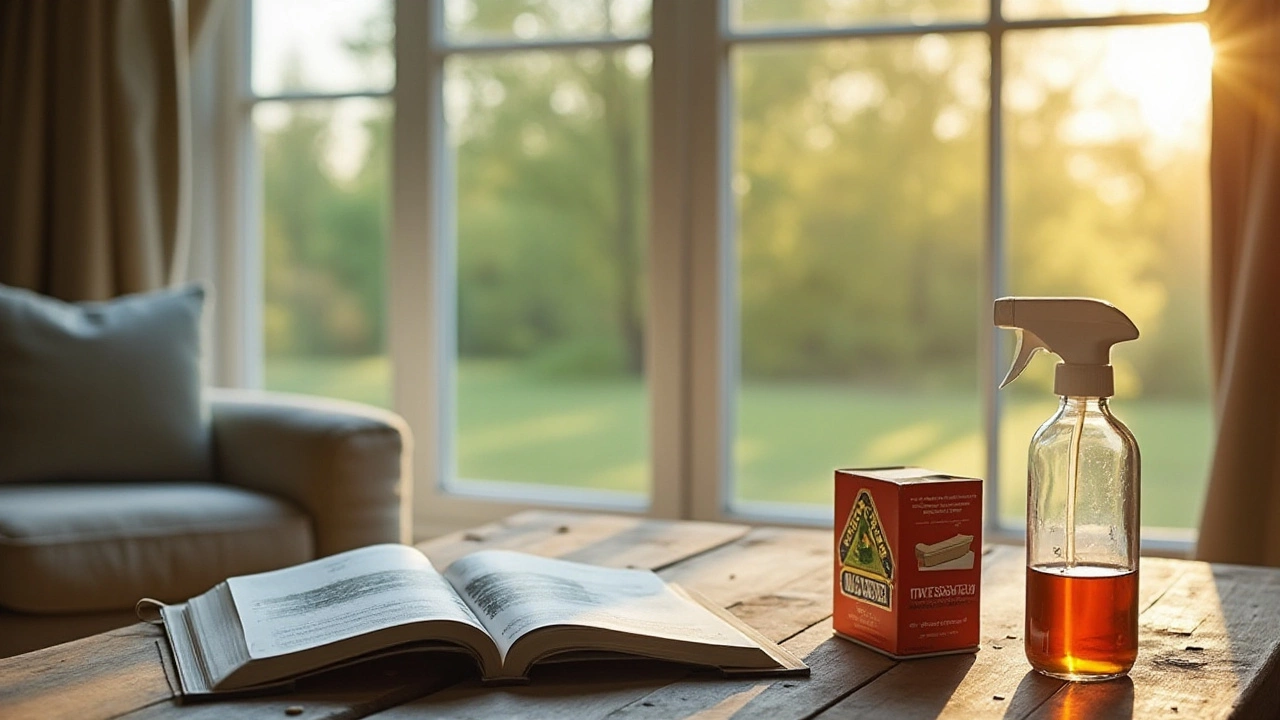
Step-by-Step Mixing Guide
Creating your own homemade window cleaner begins with gathering the right ingredients, ensuring your solution is both effective and safe. To start, you'll need white vinegar, an essential ingredient known for its natural cleaning properties. This household staple acts not only as a cleaner but also as a disinfectant thanks to its acetic acid content, making it ideal for breaking down grease and grime on your windows. Alongside vinegar, you'll require some rubbing alcohol; this element ensures that windows dry quickly and remain streak-free. A few drops of a liquid dish soap, preferably unscented, add an extra boost to this concoction, cutting through stubborn fingerprints and smudges.
With your ingredients at the ready, you'll also need a spray bottle to house your DIY cleaning solution. Start by mixing one part white vinegar with one part water in your bottle. This balance ensures the vinegar's potent cleaning power is still present but not overwhelming. Add a half cup of rubbing alcohol into this mixture to promote a streak-free shine, especially important on sunny days when windows tend to dry quickly. Finally, add a couple of drops of dish soap. Shake the bottle gently to mix all these components thoroughly, without creating too many suds. A fun fact: white vinegar was reportedly used by the Romans in ancient times as a cleaning agent, a testament to its long-standing efficacy.
It's said that many traditional cleaning formulations have been around for centuries, with natural ingredients coming back into favor in modern households due to their efficacy and eco-friendliness. “Natural cleaning is not just about the lack of chemicals; it’s about using ingredients that work,” says a natural cleaning expert from the international cleaning academy.
As you prepare to put your window cleaner to the test, remember the importance of proper technique. Before spraying your mixture, ensure that the window frames are clean; dirt can easily transfer to the glass if overlooked. Using a lint-free cloth, start at the top of the window and work your way down, ensuring even coverage. For particularly stubborn residues, apply the solution again and let it sit for a few moments before wiping. If your windows are very large, you might find using a squeegee helpful; it efficiently removes any remaining streaks, leaving you with that sought-after sparkling finish. By engaging with these steps, you not only save on costly store brands but also contribute positively to environmental well-being.
Tips to Avoid Streaks
Ensuring a streak-free finish when using your homemade window cleaner can often feel like an elusive challenge, but with a few handy techniques in your toolkit, you can achieve the sparkling clarity you seek. To begin with, it's crucial to choose the right weather conditions for your window cleaning project. Always aim to clean your windows on a cloudy day, or at least when direct sunlight is not beaming onto the glass. Sunlight can cause the cleaning solution to dry too quickly, leaving behind a residue that results in streaks. A cloudy setting allows the cleaner ample time to work its magic without drying prematurely.
Another useful strategy is to work with the appropriate tools. While paper towels might seem convenient, they often leave behind lint, causing little specks to adhere to your freshly cleaned glass. Instead, opt for a microfiber cloth or a rubber squeegee. Microfiber is particularly adept at polishing without leaving fibers behind, whereas a squeegee effectively removes cleaner without smears. As you clean, adopt a methodical zigzag or circular motion to ensure thorough coverage, then finish with a top-to-bottom stroke on the final pass, guiding any remaining moisture downward.
It's equally important to consider the ratio of ingredients in your DIY mixture. Overdoing it with concentrated vinegar can inadvertently lead to a solution that is too potent and dries patchily on the glass. Aim for a balanced mix; a popular recommendation is two parts water to one part vinegar for optimal clarity without harshness. Some cleaning enthusiasts also suggest a drop or two of dish soap to break down stubborn grease or fingerprints, ensuring a spotless surface.
If streakiness persists despite your best efforts, it might be a hint to reassess your water source. Hard water, with its high mineral content, can leave stubborn deposits that thwart the clarity you desire. If this is the case, consider using distilled water in your DIY window cleaner. Distilled water is free of minerals, presenting a clearer path to gleaming windows. For those who adhere to more traditional methods, remember a simple piece of crumpled newspaper can sometimes outperform fancy tools, providing it's free of colorful ink that might transfer.
"The best results are usually simplest. Often, it's a matter of reducing variables with great practice."—Michael Clark, Cleaning Expert
Lastly, cleanliness of the tools themselves is often overlooked. Make sure to rinse and dry your microfiber cloths and squeegees thoroughly to prevent transferring yesterday's grime back onto today's tasks. Sometimes the smallest tweaks make a substantial difference in achieving that coveted streak-free finish. With these tips in hand, you can confidently tackle your windows, leaving them crystal clear and ready to capture the world outside with renewed clarity.
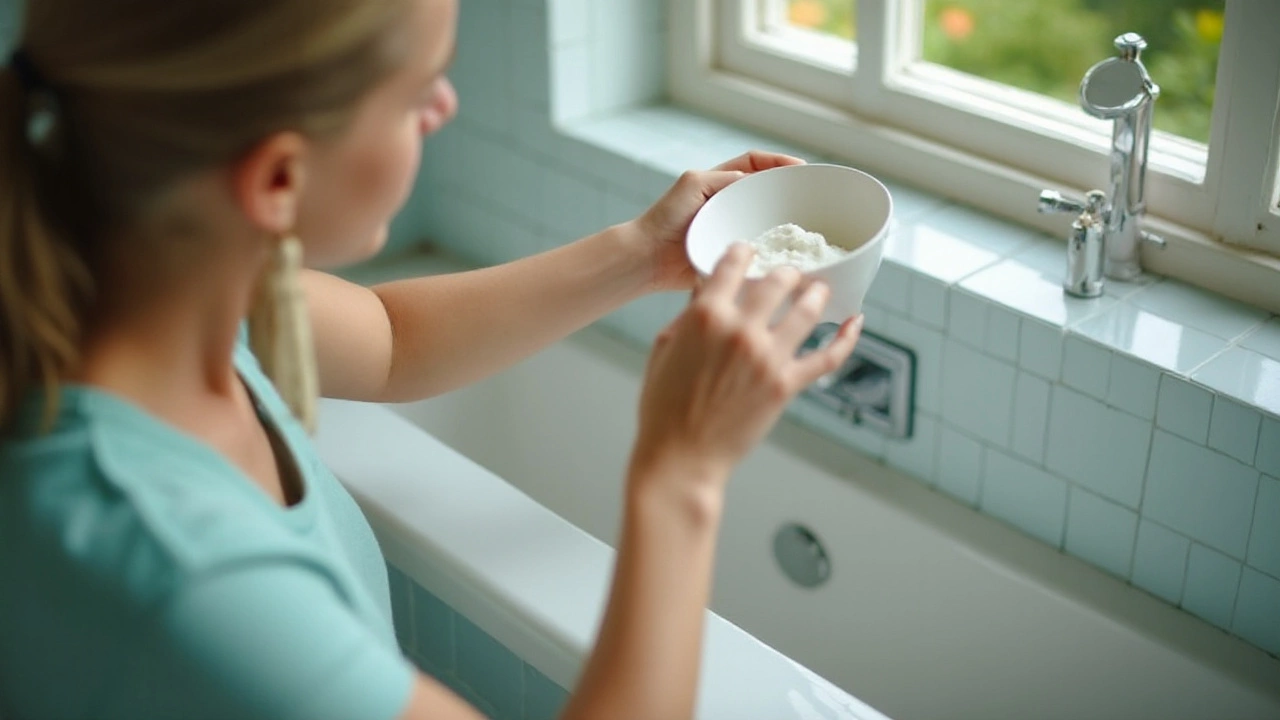
Environmental Benefits of DIY Cleaners
In today's world, where environmental consciousness is becoming more prominent, opting for a homemade cleaner doesn't just benefit your budget; it significantly impacts the planet in a positive way. Traditional commercial cleaners often contain a cocktail of chemicals that, when washed down the drain, end up in our waterways, potentially harming aquatic life and disrupting ecosystems. By crafting your own window cleaner using common household ingredients like vinegar and baking soda, you reduce the chemical runoff entering the environment, promoting a healthier planet.
One might be surprised to learn just how these natural ingredients hold up against their commercial counterparts. Vinegar, for instance, has been used for generations as a powerful cleaner due to its acetic acid content, which effectively cuts through grease and grime. Its natural composition means it's environmentally friendly and easily biodegradable, making it a terrific choice for those wanting to go green. On the other hand, using baking soda not only aids in deodorizing but gently scrubs surfaces without scratching, which many synthetic products fail to accomplish without risk of damage.
The production and disposal processes of commercial cleaning agents contribute significantly to pollution. Factories producing these products often emit harmful chemicals into the air, and plastic packaging typically ends up in landfills or the ocean. By choosing to make a DIY window cleaner, individuals can minimize this cycle of waste and pollution. A simple solution reused in an upcycled spray bottle can have a tangible impact. According to a study, reducing household cleaning product consumption by just five percent can lead to a noticeable dip in the household's carbon footprint.
"When people shift towards natural household cleaners, the incremental reduction in chemical waste can lead to significant environmental benefits," noted Dr. Sarah Green, an environmental scientist.
Moreover, engaging in greener choices like a DIY cleaning solution cultivates greater awareness and responsibility towards the environment within the home. Family members, especially children, learn to appreciate and respect the simplicity and effectiveness of natural products, becoming ambassadors of sustainable living. In a household setting, transitioning to these alternatives is not only a step towards a healthier planet but serves as an educational moment, enriching everyone involved.
Embracing the art of making your own cleaning solutions paves the path for a sustainable lifestyle, all while ensuring that the windows you're cleaning are not only free of streaks but entirely guilt-free. It's a small shift that contributes significantly to the big picture, proving that every positive choice counts.
Storing and Using Your Cleaner
Once you've crafted your homemade window cleaner, a little care goes a long way in keeping it effective and ready for action. Proper storage can extend the life of your concoction and ensure the safety of these ingredients when they're not helping make your windows gleam. Typically, these cleaners want a cool, dark spot, away from direct sunlight, which can degrade the ingredients. It's a pleasant surprise that a simple repurposed spray bottle can be the perfect home for your new cleaning ally. Ensure you label the bottle clearly to avoid any mix-ups and mark the date you made it. This might seem a tad meticulous, but it helps track when it's time to whip up a fresh batch.
If storage space is a concern, consider whipping up only what you need. This cleaner can always be quickly remade since the ingredients are often already part of your household supplies. When you're ready for a cleaning session, remember to give the bottle a good shake – the magic of physics ensures everything blends back together seamlessly. Always prioritize safety by keeping the bottle out of reach of curious little hands or pets. Even though this solution uses natural items like *vinegar* and *baking soda*, safety should never take the backbench.
Application is beautifully straightforward, and here’s the fun part: cleaning! Start by spraying a generous amount onto the glass surface. Using a microfiber cloth tailored for windows works wonders in buffing out streaks. If you don't have one handy, a classic stretch of newspaper can also add its magic. The technique is key; starting at the top of the window and working your way down prevents drips from targeting freshly cleaned sections. Circular motions can help work the cleaner in, while a final pass with a dry part of the cloth can catch any residues.
"Those who embrace the art of DIY cleaning often find it harmonizes both simplicity and effectiveness," notes Martina Cooper, a long-time advocate for homemade solutions. "A well-stored cleaner turns window washing from a dreaded chore into a swift, satisfying task."
In terms of its lifespan, while vinegar-based cleaners are robust, nothing beats fresh. Aim to use your *DIY cleaning solutions* within a month for peak potency. Being mindful of such details ensures your homemade marvel works optimally, leaving other cleaning agents in the dust. You'll find it's not just about cleaning windows – it's about creating a healthy, chemical-free environment that extends far beyond the panes of glass.
